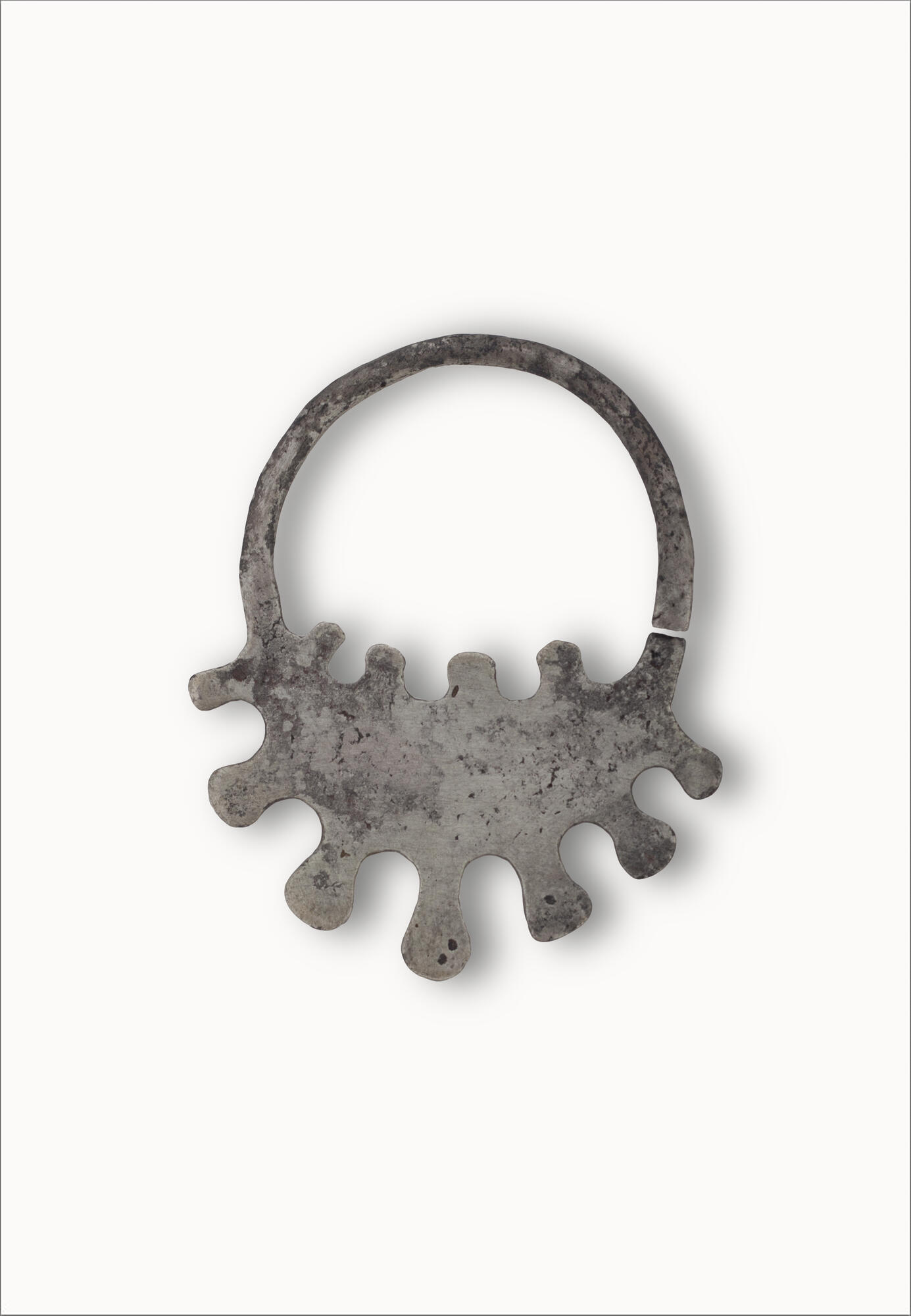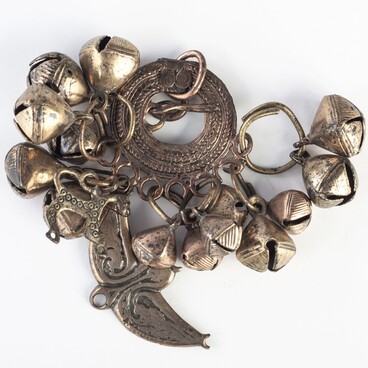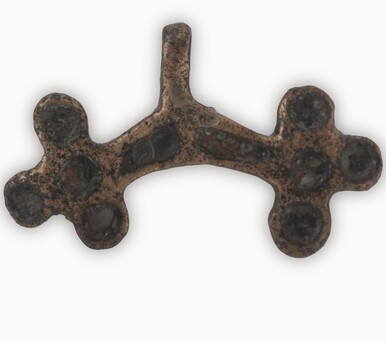The Kursk Regional Museum of Archaeology keeps a seven-lobed temple ring of the late 9th — 10th centuries. The plate of the ring is engraved with ovals truncated in the middle. The ring was part of the ornamental set of the Upper Desna Severians. This artifact was discovered in 1909 by the outstanding archaeologist Dmitry Yakovlevich Samokvasov in the course of his excavations on the territory of Gochevsky burial mound.
Temple rings are some of the most common medieval jewelry in Eastern Europe. Women could wear one temple ring or several pairs at a time. They have been known since the Bronze Age. The first temple rings in Eastern Europe were bronze spirals, dating to the 4th — 3rd millennia BC. By the 8th — 9th centuries AD they had become so popular among the Western Slavic tribes that they came to be regarded typical Slavic jewelry.
In terms of the manufacturing method the rings are divided into three groups: lobed, cast ring-shaped and wire ring-shaped of various types. The timeline includes two cultural and chronological periods — the Romensky (8th — 10th centuries) and the Old Russian (before the Mongolian invasion) ones. At the end of the 10th — 11th centuries new types of temple rings appeared in the territory of the Kursk region. They were associated with leveling out tribal differences and the formation of a single ethno-cultural Old Russian community.
As for similar finds, 17 rings of this type were found in seven burials of the Gochevsky burial mound. In another four burials it is difficult to determine the type of rings, as the descriptions are rather conventional, and the trace drawings are not available. Another fragment of a seven-lobed temple ring with an engraved plate was discovered in the settlement near the Bolshoi Gornalskoye settlement (Sudzha district, Kursk Oblast). The upper part of the plate is decorated with dentils topped by spherical finials. The two parallel lines extending the bow and hardly visible traces of festoons at the base of the two lobes suggest that this is an attempt to make a copy of one of the earlier variants of a seven-lobed temple ring with an engraved pattern. It is dated to the 10th–11th centuries.
Temple rings are some of the most common medieval jewelry in Eastern Europe. Women could wear one temple ring or several pairs at a time. They have been known since the Bronze Age. The first temple rings in Eastern Europe were bronze spirals, dating to the 4th — 3rd millennia BC. By the 8th — 9th centuries AD they had become so popular among the Western Slavic tribes that they came to be regarded typical Slavic jewelry.
In terms of the manufacturing method the rings are divided into three groups: lobed, cast ring-shaped and wire ring-shaped of various types. The timeline includes two cultural and chronological periods — the Romensky (8th — 10th centuries) and the Old Russian (before the Mongolian invasion) ones. At the end of the 10th — 11th centuries new types of temple rings appeared in the territory of the Kursk region. They were associated with leveling out tribal differences and the formation of a single ethno-cultural Old Russian community.
As for similar finds, 17 rings of this type were found in seven burials of the Gochevsky burial mound. In another four burials it is difficult to determine the type of rings, as the descriptions are rather conventional, and the trace drawings are not available. Another fragment of a seven-lobed temple ring with an engraved plate was discovered in the settlement near the Bolshoi Gornalskoye settlement (Sudzha district, Kursk Oblast). The upper part of the plate is decorated with dentils topped by spherical finials. The two parallel lines extending the bow and hardly visible traces of festoons at the base of the two lobes suggest that this is an attempt to make a copy of one of the earlier variants of a seven-lobed temple ring with an engraved pattern. It is dated to the 10th–11th centuries.




